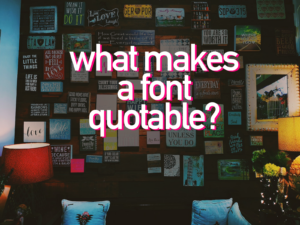Choosing the best font for legal documents is crucial to ensure readability and professionalism. With numerous typefaces available, selecting the ideal one can be a daunting task. This article will delve into the top fonts used in the legal industry and discuss their advantages, helping you make an informed decision for your documents.
Importance of Choosing the Right Font for Legal Documents
Legal documents are critical for any business or individual. They require precise language and careful drafting to ensure that they are legally binding, and the right font is just as important. The font you choose can impact legibility, perception of professionalism, and consistency in legal documents.
Legibility Matters
When it comes to legal documents, legibility is crucial. A poorly chosen font can make it difficult for readers to understand the document’s content or convey the wrong message. Choosing a font that is easy to read, such as Times New Roman, Arial, or Calibri, can make a big difference in how effective your legal document is. These fonts are clear and easily legible, making them ideal for contracts, court documents, and legal briefs.
Another aspect of legibility is font size. The size should be large enough to read easily but not so large that it uses too much space. The recommended font size for legal documents is 12-point, which is large enough to read comfortably and small enough to fit a lot of text on a page.
Perception of Professionalism
The font you choose will also impact the perception of professionalism. Using a font that is too casual or unprofessional can make the document appear less credible. It is best to stick with classic fonts that are widely accepted as professional, such as Times New Roman or Arial. These fonts are timeless and convey a sense of authority, making them ideal for legal documents.
It is also important to consider the document’s purpose when choosing a font. For example, if you are drafting a legal brief, you may want to choose a font that is more formal and traditional. On the other hand, if you are drafting a marketing agreement, you may want to choose a font that is more modern and reflects the company’s brand identity.
Consistency in Legal Documents
Consistency is crucial in legal documents, and the font is no exception. Using the same font throughout the document will create a sense of cohesion and make the document easier to read. It is also important to ensure that the font is consistent across all documents, including contracts, briefs, and other legal documents.
Consistency extends beyond just the font. It is also essential to use the same font size, spacing, and formatting throughout the document. This will ensure that the document is easy to read and understand, making it more effective and professional.
Overall, choosing the right font for legal documents is critical. Legibility, perception of professionalism, and consistency are all factors to consider when selecting a font. By choosing a font that is easy to read, professional, and consistent, you can ensure that your legal documents are effective, credible, and legally binding.
Characteristics of the Best Font for Legal Documents
When it comes to legal documents, using the right font can make all the difference. Here are some characteristics to consider when selecting the best font for legal documents.
Serif vs. Sans Serif Fonts
There are two main categories of fonts: serif and sans serif. Serif fonts are those with small lines or flourishes at the ends of each letter, while sans serif fonts are those without. Serif fonts are often seen as more traditional and formal, while sans serif fonts are perceived as modern and clean.
In the context of legal documents, serif fonts tend to be preferred because they are seen as more traditional and trustworthy. Times New Roman and Georgia are two popular serif fonts often used in legal documents.
Font Size and Spacing
The size and spacing of the font is also important for legal documents. The font should be easily readable and not too small. A font size of 12 point is commonly used for legal documents. Additionally, proper spacing between lines and paragraphs is crucial for readability. Double spacing is often used for legal documents.
Typeface Legibility and Readability
Legibility refers to how easily the individual letters can be distinguished from one another, while readability refers to how easy it is to read a block of text. When it comes to legal documents, it’s important to choose a font that is both legible and readable. Some fonts, such as Comic Sans, are considered too informal and should be avoided in legal documents.
Overall, the best font for legal documents is one that is traditional, easy to read, and professional. Consider using serif fonts, a font size of 12 point, double spacing, and a font with high legibility and readability.
Links for more information:
- NY Times – Best Pen for Taking Notes
- Entrepreneur – How to Write a Business Plan
- LegalZoom – Legal Documents You Need to Start a Business
Recommended Fonts for Legal Documents
Legal documents are an essential part of any law firm, and the choice of font can make a big difference in how they are perceived. The right font can help convey a sense of professionalism and clarity, while the wrong one can make the document difficult to read and even lead to costly mistakes. Here are five fonts that are commonly used in legal documents:
1. Times New Roman
Times New Roman is a classic serif font that has been used in many legal documents over the years. Its clear, easy-to-read letters make it a popular choice for contracts, pleadings, and other legal documents. However, some people find it to be a bit old-fashioned and prefer more modern fonts.
2. Arial
Arial is a sans-serif font that is often used in legal documents because of its clean, modern look. It is easy to read and makes a good choice for documents that need to be read quickly. However, some people find it to be a bit too informal for legal documents.
3. Calibri
Calibri is a modern sans-serif font that was designed specifically for Microsoft Office. It has become a popular choice for legal documents because of its clean, crisp lines and easy readability. However, some people find it to be a bit too casual for formal legal documents.
4. Georgia
Georgia is a serif font that is similar to Times New Roman but has a more modern look. It is a popular choice for legal documents because of its clear, easy-to-read letters and its ability to convey a sense of professionalism. However, some people find it to be a bit too formal for some types of documents.
5. Garamond
Garamond is a classic serif font that has been used in printing for over 400 years. Its elegant, timeless look makes it a popular choice for legal documents that need to convey a sense of tradition and authority. However, some people find it to be a bit too ornate for some types of documents.
When choosing a font for a legal document, it is important to consider the context and the purpose of the document. Each font has its own strengths and weaknesses, and the right choice will depend on the specific needs of the document. It is also important to consider the formatting of the document, including font size, line spacing, and margins, to ensure that it is easy to read and professional-looking.
In summary, the best font for legal documents is one that prioritizes readability, professionalism, and a touch of elegance. Times New Roman, Arial, and Garamond are top contenders for this purpose, each offering their own unique characteristics. When selecting a font for your legal documents, consider the specific needs of your audience and the document’s purpose.
Remember that consistency is key. Stick to one font throughout the entire document to maintain a clean and organized appearance. Additionally, aim for a font size between 10 and 12 points, and use appropriate line spacing to improve overall readability. By following these guidelines, your legal documents will be clear, polished, and easily understood by all parties involved.




